
Key Points
- New Lows Continue to Rise
- Primary Trends in the U.S. Remain Bullish, For Now
- 10-Year Yield is Key, But Watch the Flattening Curve
- Precious Metals Were Not a Haven, Commodities Under Pressure
- Dollar Remains Bullish
Chart in Focus
Revisiting the chart that we posted last week, we can see that the S&P 1500 came under pressure and that new lows continue to build on this index and the NYSE. If these metrics do not begin to recede, we must be open to the idea that equities will begin to break below the key levels that we highlight in this Note, ending the bullish trend.
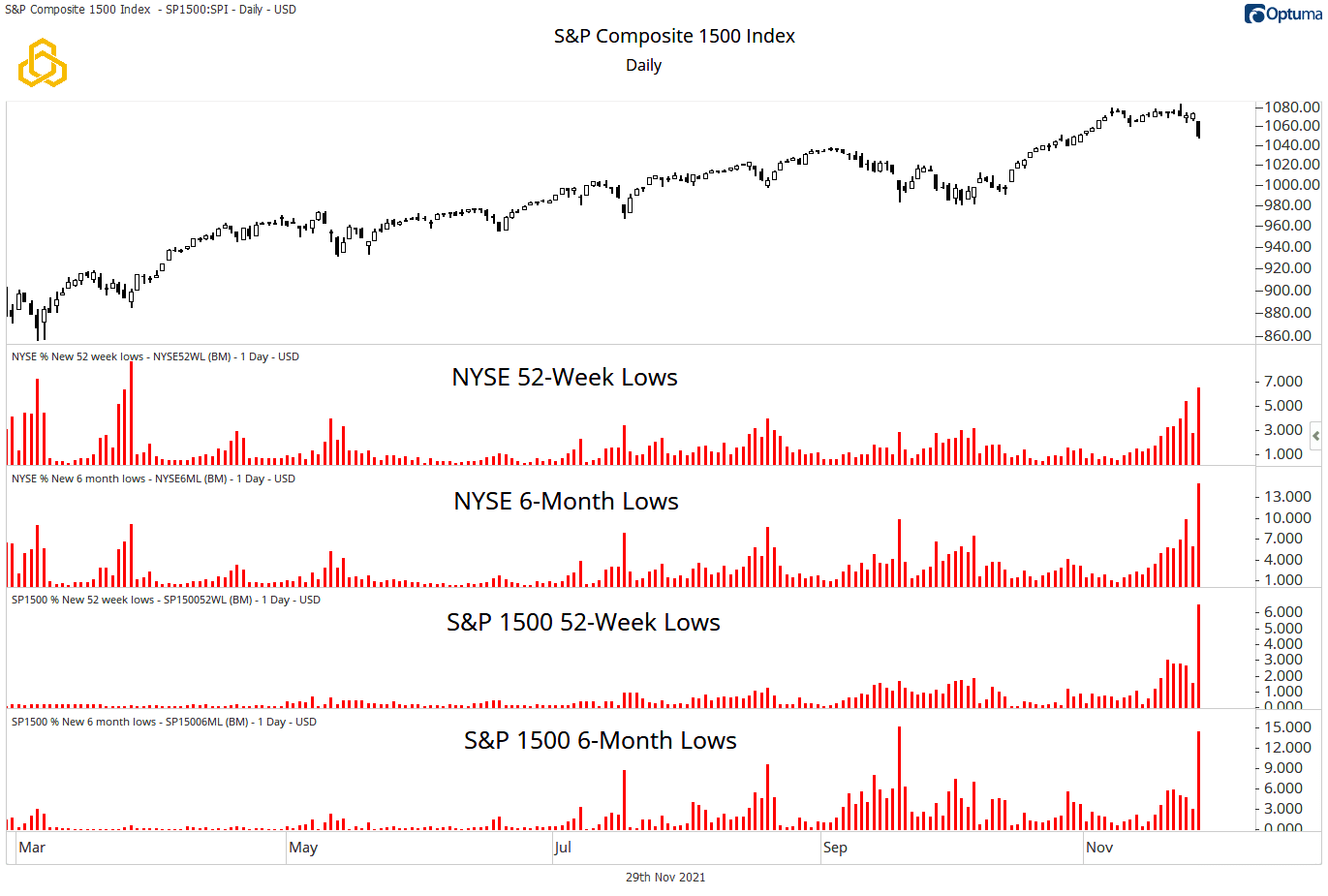
U.S. Equities
While Friday’s selloff in the S&P 500 was certainly noteworthy, when looked at through the lens of the weekly chart, it is hard to make the case that there was much technical damage done to the prevailing trend. The index remains above the rising 10-week moving average and near-term support at the 4,500 level. Below that, the 40-week moving average has moved into line with more important support near 4,300. Last week we highlighted new lows were building, and that does remain a concern in the near term. However, until there is a change to the trend, the bulls will retain the benefit of the doubt.
The 14-week RSI has moved out of an overbought condition but remains in a bullish regime, in line with the price trend.
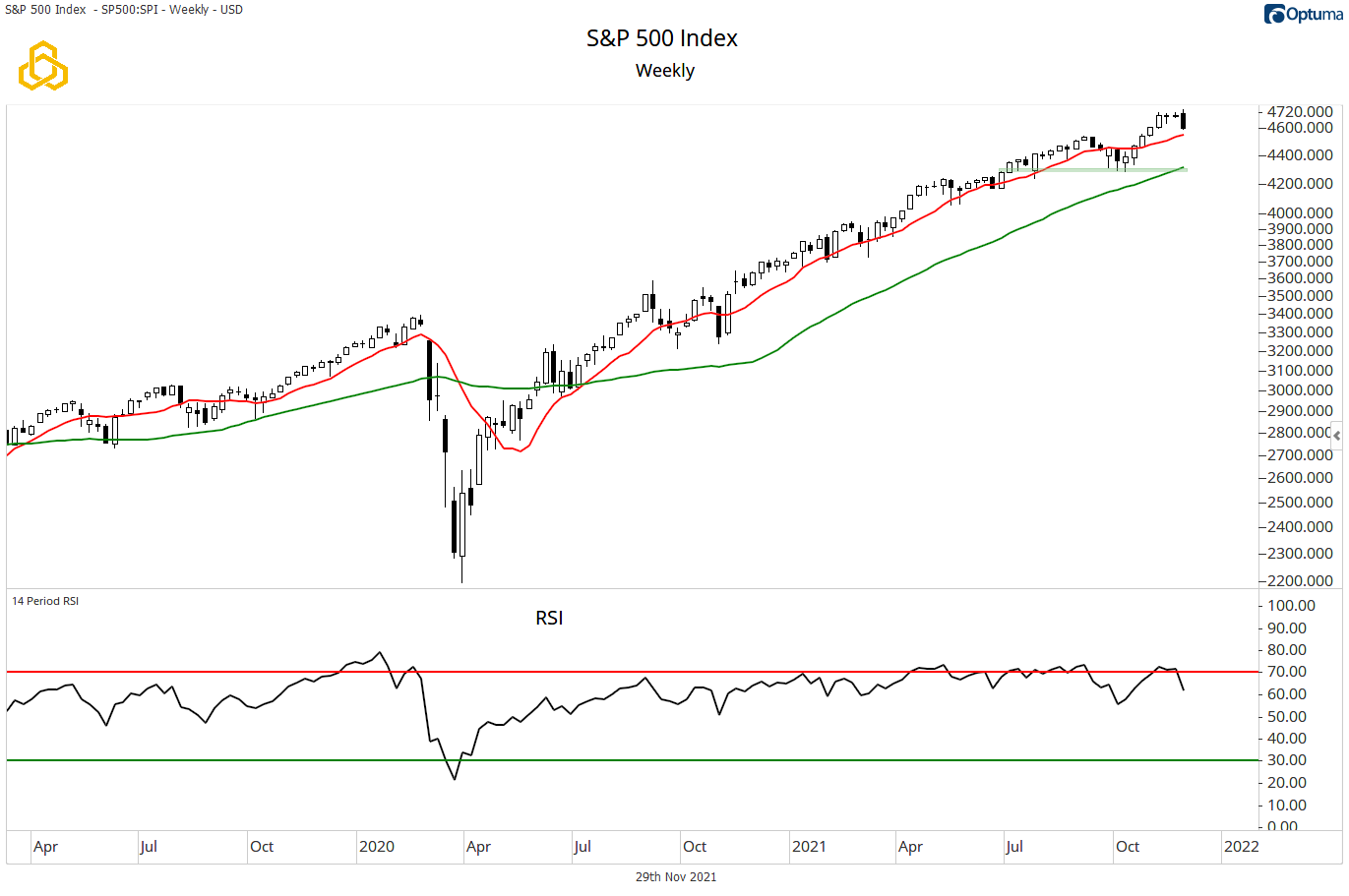
The S&P Small Cap 600 closed lower for a third consecutive week move back into the trading range that had been in place since March. The index closed below the 10-week moving average but managed to hold the 40-week moving average. The 14-week RSI has checked back to test the declining trend line after failing to confirm the recent price highs.
Relative to the S&P 500, Small Caps are testing support as they remain in a consolidation. On both an absolute and relative basis, the onus is on the bulls, and we find it hard to become excited about the group until a clearer trend emerges.
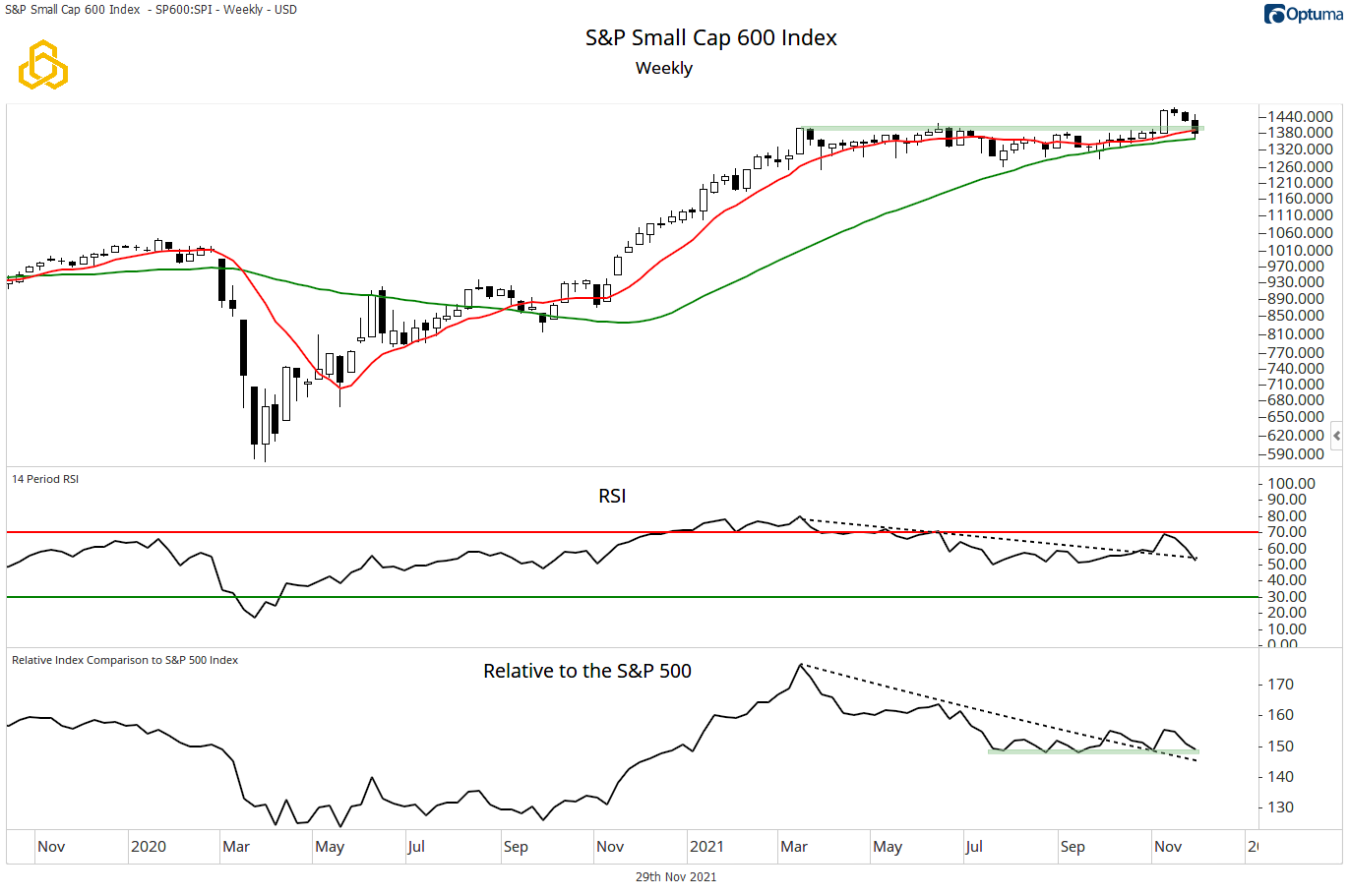
Within the S&P 600, all sectors closed lower on the week:
- Energy – Pulling back after a failed breakout.
- Staples– Failed at resistance; support is near 2,440.
- Health Care – Sloppy consolidation in play; support is near 4,250.
- Telecommunication Services – Failed breakout in play, likely to test trend support.
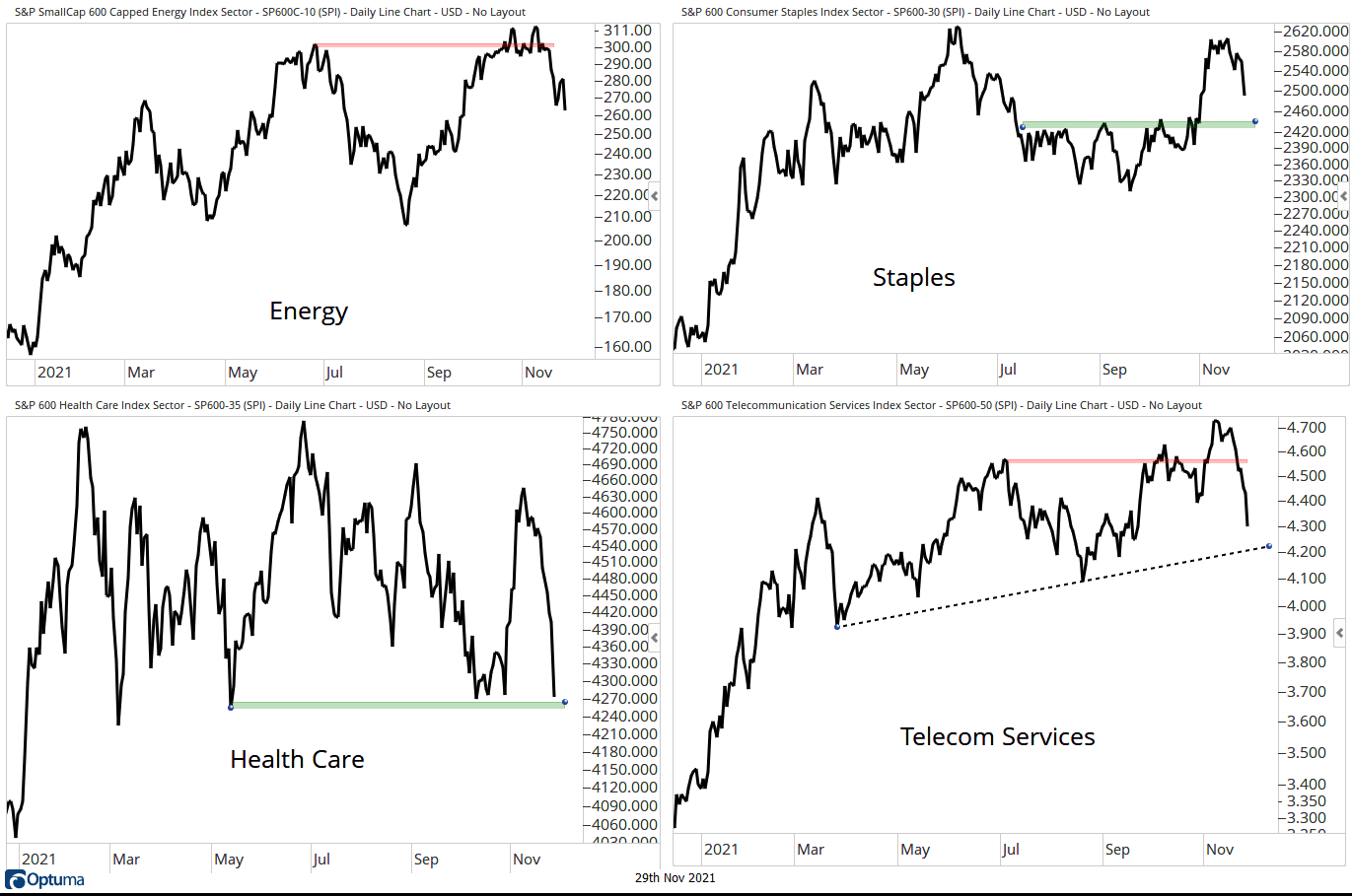
The NASDAQ Composite Index was not spared from the selling pressure that weighed on equities on Friday. However, as with the S&P 500, we can’t make a case that there was much damage done to the prevailing bullish trend. Price remains above the rising moving averages and the key levels, 15,300 (short-term) and 14,100 (longer-term), that we have been highlighting. The 14-week RSI remains in a bullish regime, just below overbought levels.
On a relative basis, the NASDAQ Composite is testing support. Holding this level keeps the February highs in play.
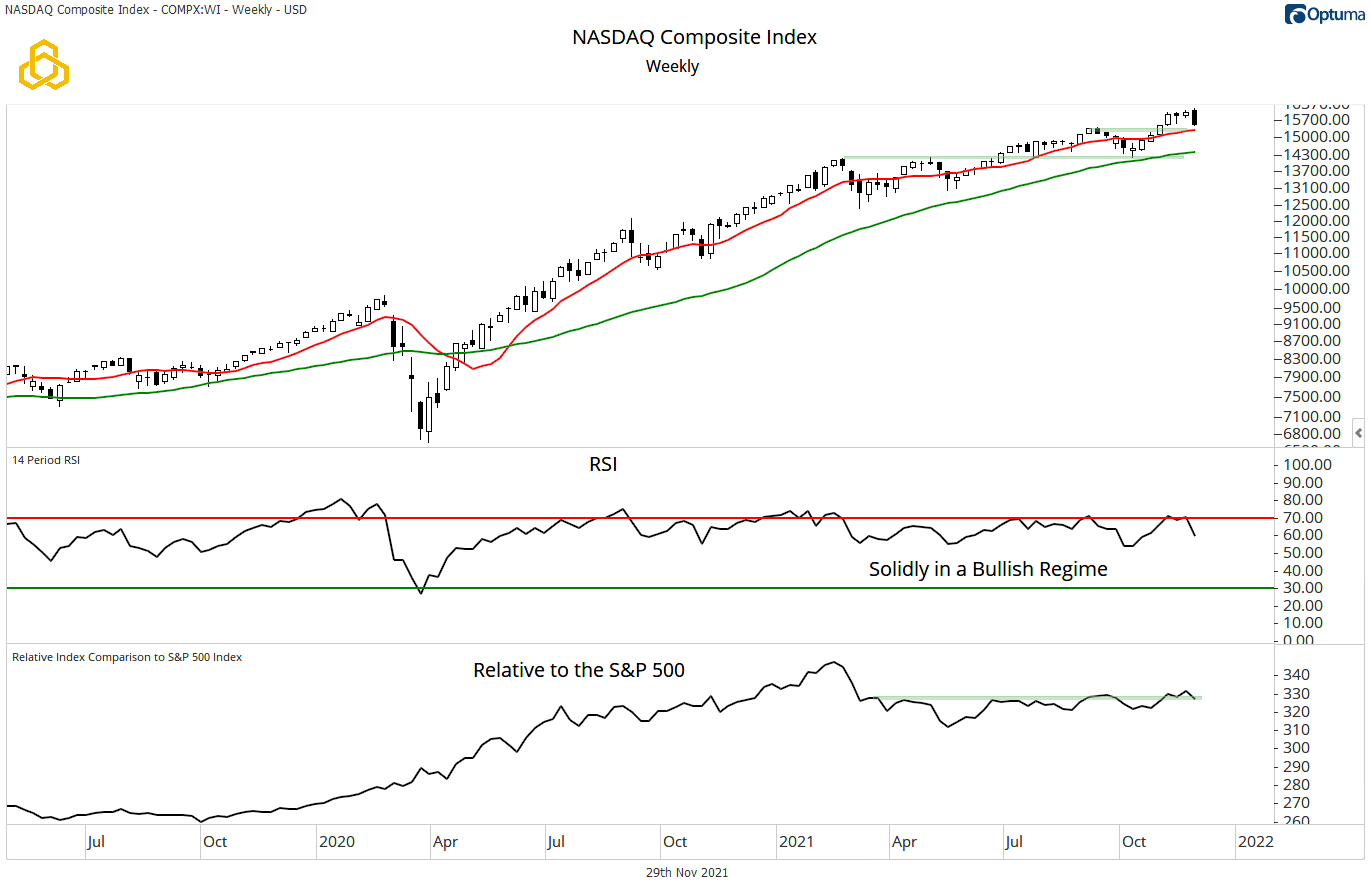
U.S. Fixed Income
The 10-Year Note found buyers last week, especially as risk assets came under pressure on Friday. Support continues to hold, but so does resistance in the form of the declining 10-week moving average. We have made the case that the bears of in control as long as the price is below the moving averages, and we stand by that view.
The 14-week RSI remains tilted in favor of the bears, but we do note the higher low.
The yield has resistance at the 1.75% level. This is arguably one of the most important charts in the market right now. A treasury rally likely points to further risk reduction across other asset classes.
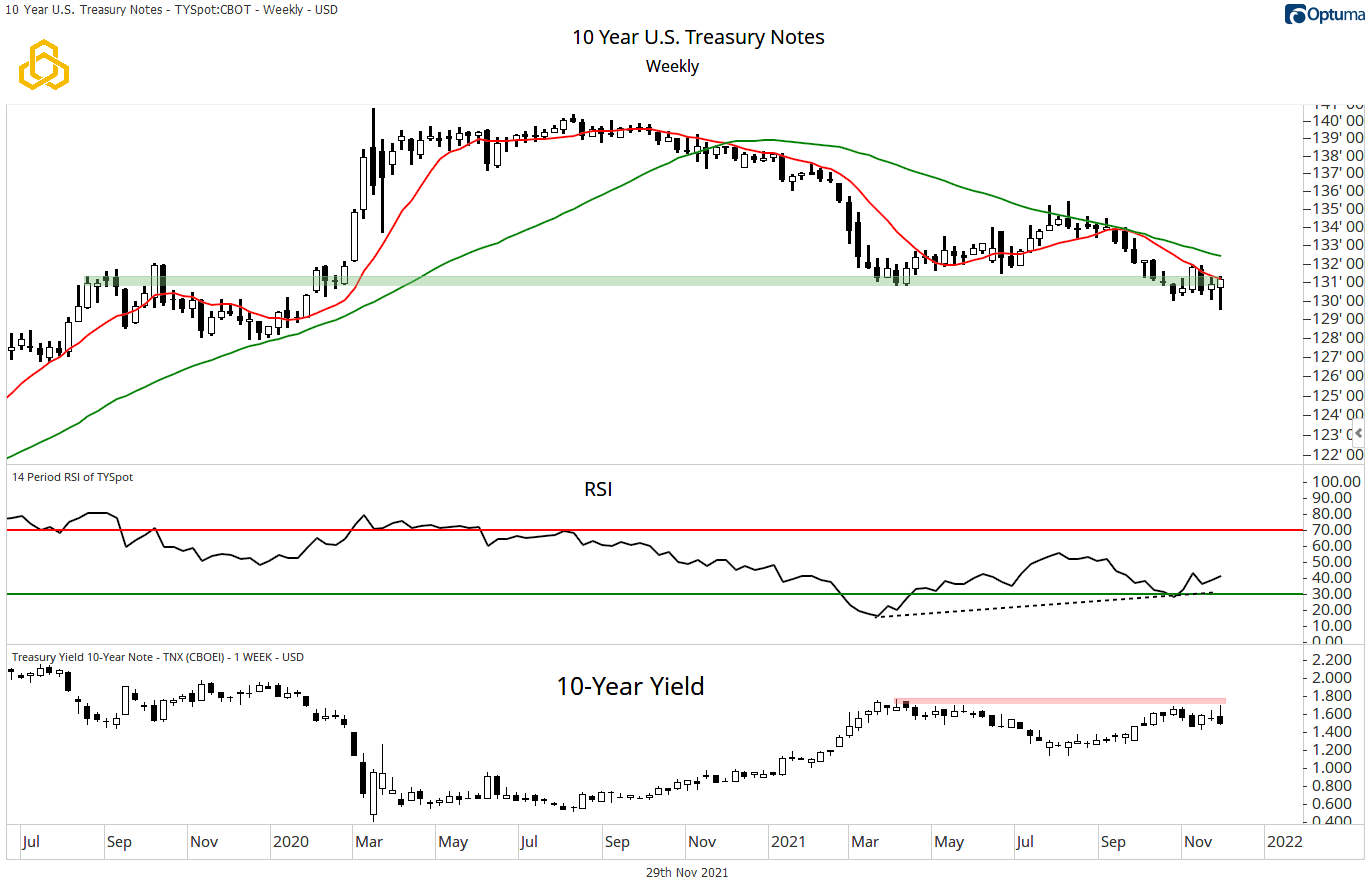
While the 10-Year gets all the attention and is an extremely important chart, the rest of the curve is painting an interesting picture. Despite the flight from risk last week, the front end of the curve moved higher. The back end of the curve moved lower and remained in a choppy consolidation. The net impact is a further flattening of the curve. Are investors beginning to price in slower economic growth?
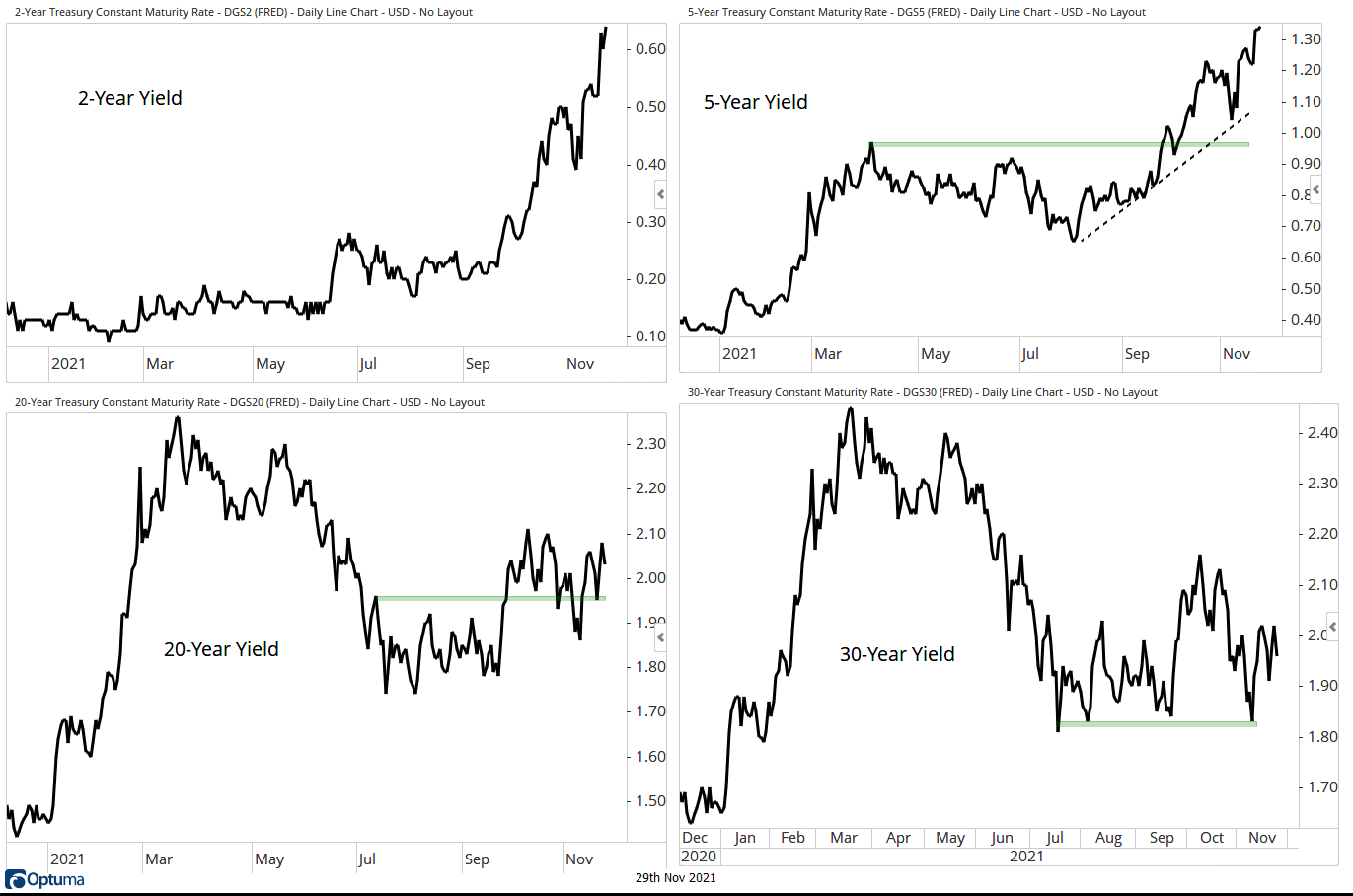
Global Equities
The Global Dow sustained more technical damage than did markets in the U.S. By the close of trading on Friday, the index was below the 10 and 40-week moving averages and back in the trading range. The 14-week RSI is heading south after failing to become overbought and making a lower high. At best, we can call momentum neutral.
The reason that we have not been bullish in global stocks has been the relative trend, which remains bearish. U.S. investors with a home country bias continue to be rewarded.
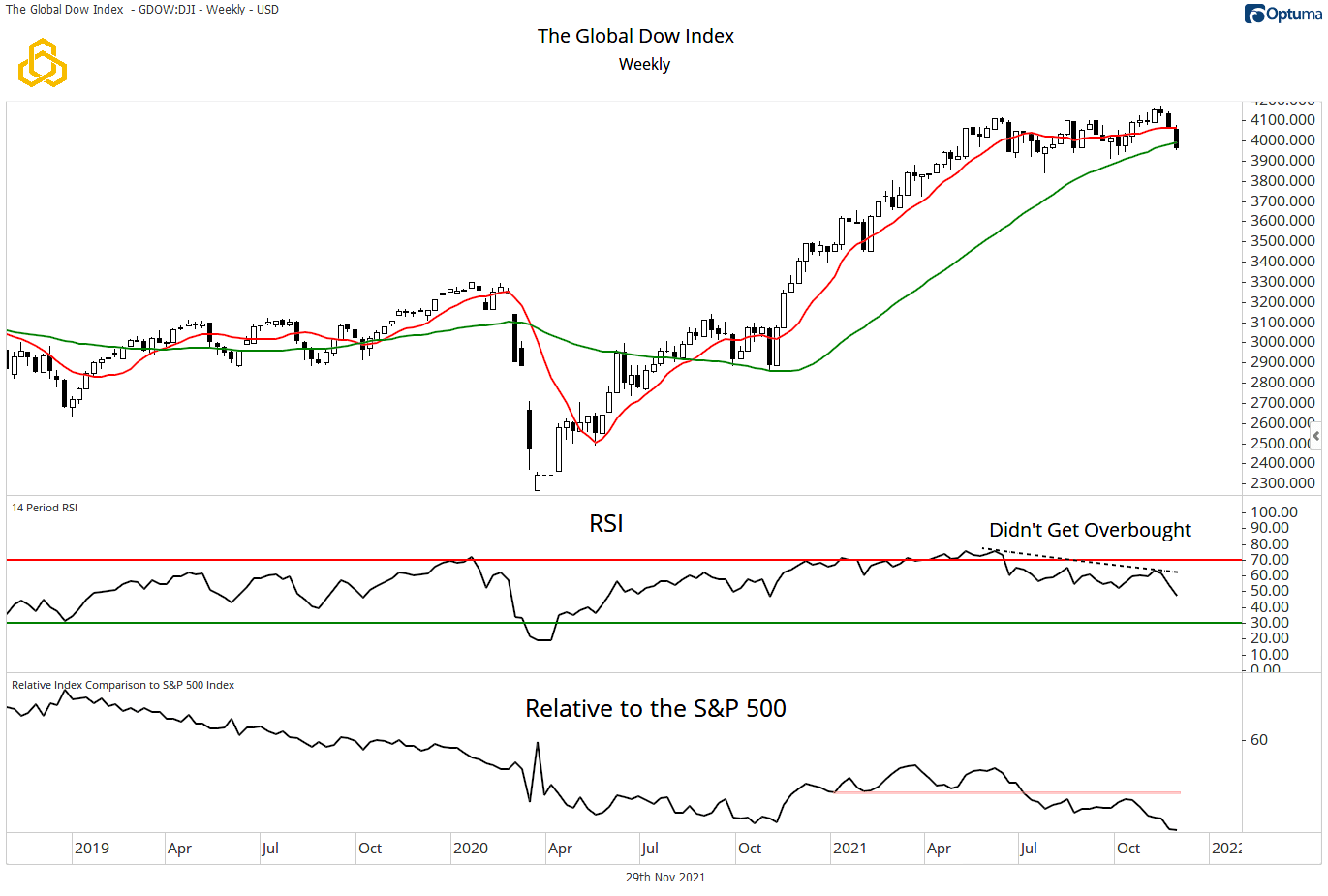
Commodities
The Bloomberg Commodity Index also was not immune to a risk-off environment last week, closing below the 10-week moving average to put the near-term trend under pressure. The bigger trend remains bullish, above support (98) and the rising 40-week moving average. The RSI remains in a bullish regime despite a lack of confirmation at the recent price highs.
The relative trend is holding below the breakout level. Until this level is retaken, October’s strength will continue to be viewed as a false breakout.
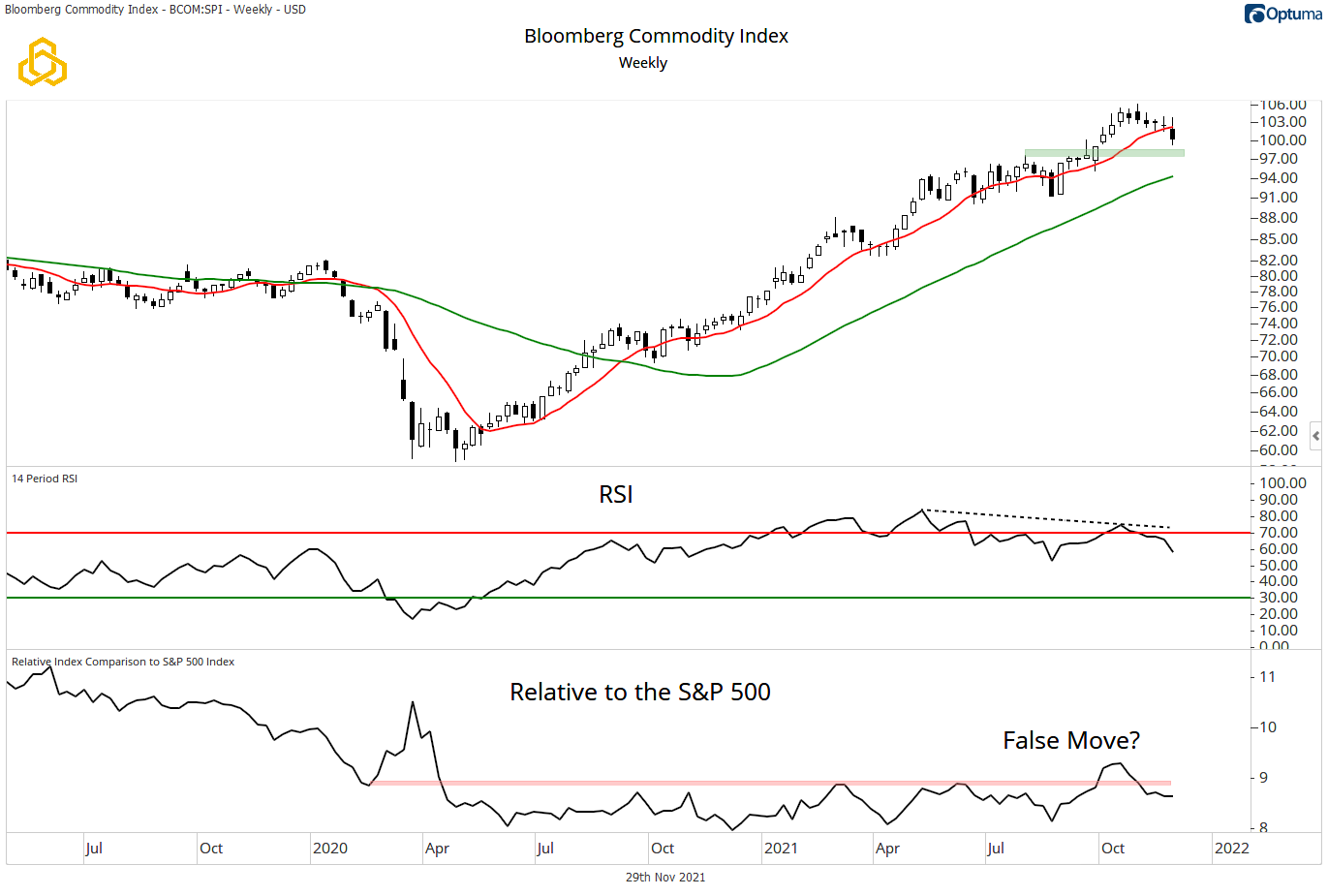
Last week, we called out Energy as the main reason for commodity weakness. This week we can add Precious Metals to the list.
- Precious Metals – Big move lower leaves a false breakout in place.
- Industrial Metals – Under the rising trend line, below 460, the bears take the ball.
- Agriculture – Grinding higher, the May highs are in play.
- Energy – Further weakness takes out the 250-support level. Bearish below there.
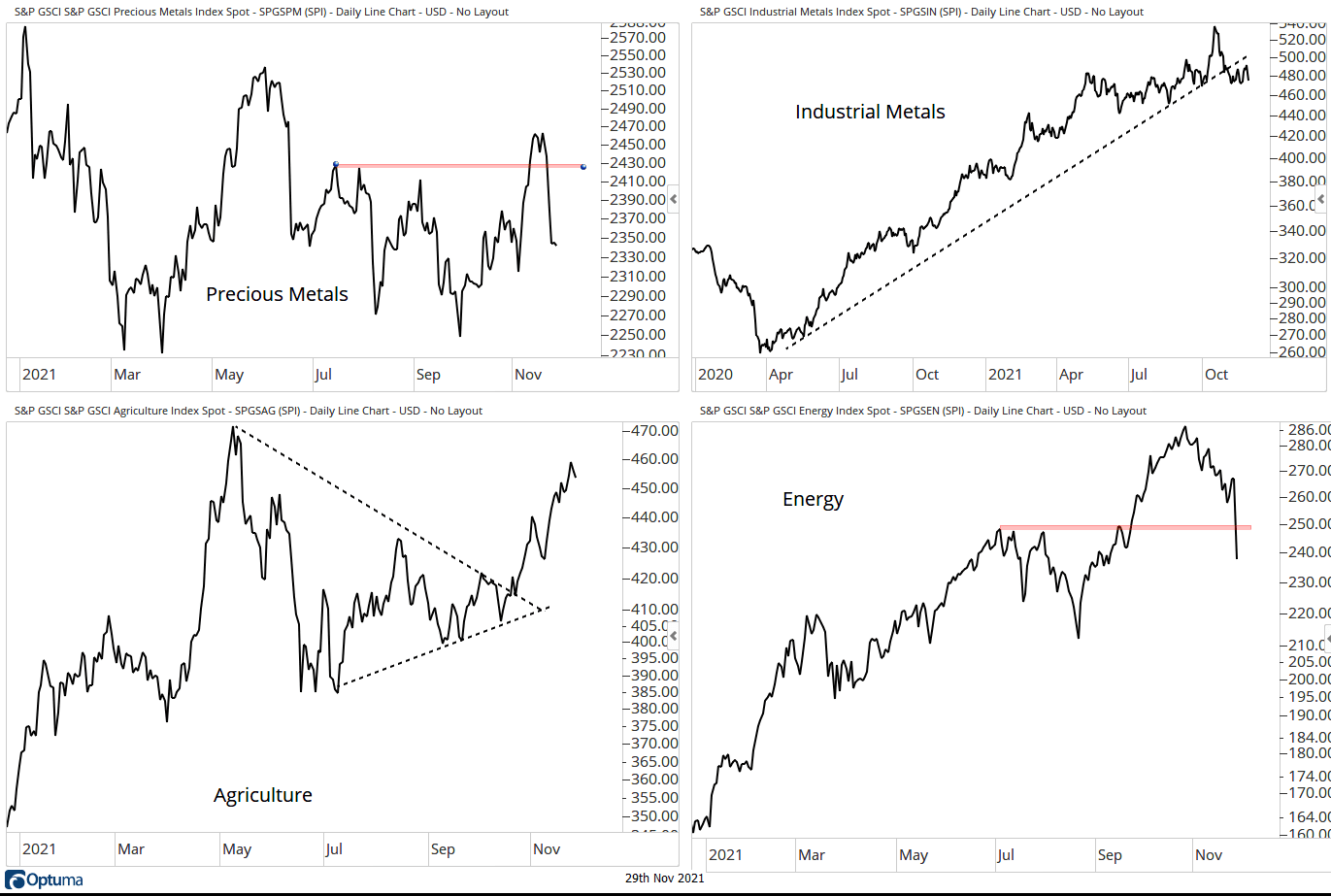
The Dollar
The U.S. Dollar remains above the 94.50 breakout levels and the rising 10-week moving average to keep the trend bullish. The 14-week RSI is now overbought, confirming price strength.
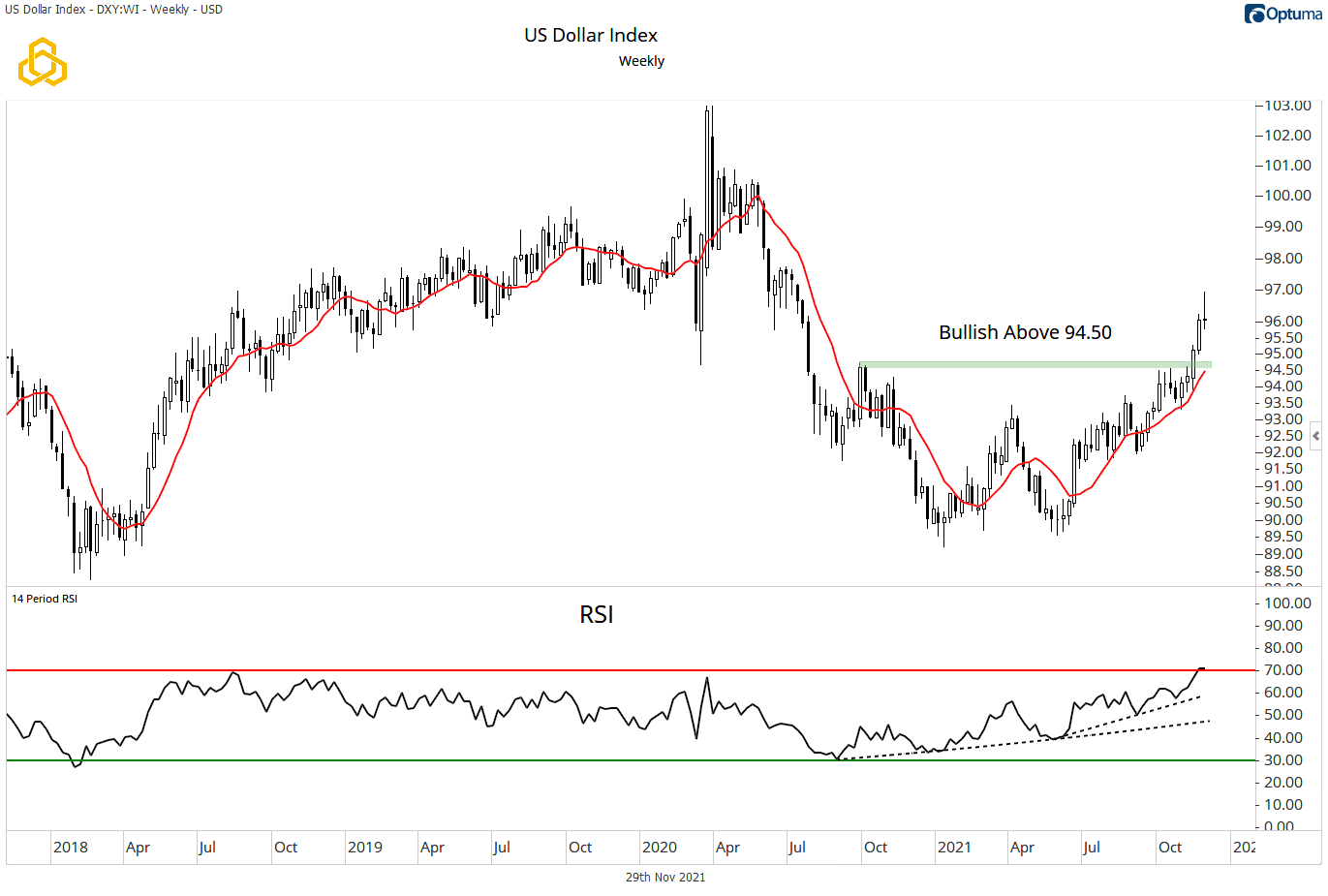
Take-Aways:
Yes, markets came under pressure last week on the heels of the build in new lows that we highlighted. However, in the U.S., there was not much damage done to the prevailing price trends (except for Small Caps). Rates have our attention as the new week begins as the 10-Year tests key levels and the curve continues to flatten. Commodities are under pressure as Precious Metals join energy in a drawdown, keeping the relative trend in check.
Disclosure: This information is prepared for general information only and should not be considered as individual investment advice nor as a solicitation to buy or offer to sell any securities. This material does not constitute any representation as to the suitability or appropriateness of any investment advisory program or security. Please visit our FULL DISCLOSURE page.
